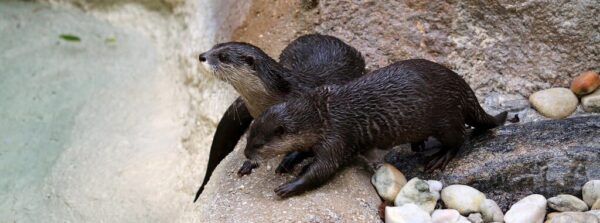Small-clawed otters (Aonyx cinerea) are the smallest of all 13 species of otter. These small mammals have a sleek and furry bodies about 2-3 feet long. They are native to Asia and can be found in freshwater wetlands, mangrove swamps, rice fields, lakes, streams, reservoirs, and canals.
Physical Traits
Small-clawed otters have short fur ranging from light brown to dark brown. They have webbed feet with reduced claws which gives them their name. The nails on their front paws are used for digging and grooming. They also have flattened tails which help them swim quickly through the water.
Life Span
The average life span of a small-clawed otter is between 8-10 years in the wild and up to 15 years in captivity.
Diet
Small-clawed otters feed mainly on mollusks, crabs, fish, frogs, and other small aquatic animals. They use their sharp claws to dig for food in the mud or sand at the bottom of rivers or streams.
Reproduction
Small-clawed otters form monogamous pairs for life and breed once a year during the wet season (usually between June-August). The female gives birth to 1-4 young after a gestation period of 60-70 days. The young stay with their parents until they reach maturity at around 18 months old.
Conservation Status
The conservation status of small-clawed otters is currently listed as Vulnerable by the IUCN Red List due to habitat loss and degradation caused by human activities such as fishing and pollution.
Interesting Facts
Small-clawed otters are extremely dexterous animals with an excellent sense of smell which they use to locate prey underwater! They are also very social creatures living in large family groups of up to 10 individuals!


